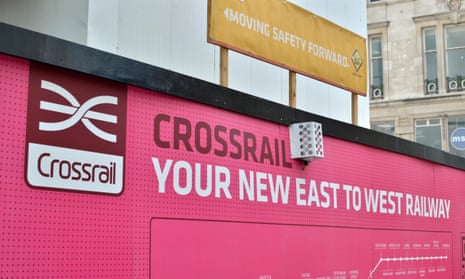With the first trains now running between Liverpool Street and Shenfield, Essex, on the first stage of the much-anticipated Crossrail service, now renamed the Elizabeth Line, what do those who live along the route think of the project?
The new service, costing £14.8bn, is Europe’s largest infrastructure project and promises economic benefits to south-east England and shorter journey times for commuters once it is fully functional out to Heathrow by the end of 2019.
Joanne Sumner, who runs a yoga and meditation studio in Hanwell, west London, hopes there will be new business opportunities. “So far, I haven’t experienced any disruption and I’m looking forward to it being easy for people to come to west London for courses I run,” she says.
“Because I teach natural remedies, like Bach flowers, it’s helpful to get people into places like Richmond Park and Kew Gardens so they can examine the plants in real life. That’s easier from a west London base.”
Sumner believes Crossrail will be good for small businesses that can’t afford high rents for offices in central London. They’ll be much easier to reach, she believes.

The new line promises to bring an extra 1.5 million people within reach of central London in 45 minutes, and shorter commutes for those who already live in London. That’s something Sumner’s looking forward to. “I will use Uber a lot less to get into town – for example, when carting around my teaching stuff for the College of Naturopathic Medicine, which is in Islington,” she says.Holly Brockwell, who works for WikiTribune in Paddington and lives in Stratford, east London, is also looking forward to shorter journeys. She says her current journey, on the Central and Bakerloo lines, may not be the worst journey in the world, “but it takes about an hour door-to-door, and the Central line is pretty horrible at rush hour”. When Crossrail fully opens, Brockwell expects her commute between Stratford and Paddington to be 18 minutes.

Tom Farthing, who works in public relations and lives in Abbey Wood, south-east London, will use Crossrail to get to work and feels it will be a real boost to be part of the bigger London ecosystem. “At the moment, the Southeastern rail service is often late, pauses frequently on a busy line and takes around 45 minutes to central London,” he says.
Shorter commute times are expected to push up house prices in areas close to Crossrail stations. A 2015 study predicts that house prices could rise on average by 8% before 2020, but that some could rise by much more. Brockwell, who pays £1,500 a month for her two-bedroom flat, is concerned about what Crossrail may do for rental prices in Stratford. “Young professionals like my partner and me have been priced out of so many areas already,” she says. “Stratford seemed like the ideal combination of transport connections, affordability and things to do. I’d like to buy here eventually, so I hope Crossrail won’t make that as unaffordable as it is everywhere else.”

It’s not just house prices that could go up. Farthing believes the demographic of Abbey Wood, for instance, could be set for drastic change. “This area is very working class and has a lot of current and former council estates. It is 15 minutes from Canary Wharf, in an area which is effectively a blank canvas, especially with the lovely local woods and abbey nearby,” he says. “I can see it being a honeypot for big real estate developers and gentrification.”
But as well as the future impact, which remains to be seen, locals living along the Crossrail route have had to put up with a huge amount of disruption. While Crossrail stations are being renovated for the new service, some have been closed, with a bus replacement service provided, and not everyone has been happy. In Shenfield, local business leaders have complained about the impact of the Crossrail work on shops, parking and congestion.

Michael Babatundé, an office administrator in London, says the work at his local station in Abbey Wood has been disruptive. “Some of the normal entrances are not available and one has closed off an entrance on to a nearby street. This sometimes puts me off using it.”
Babatundé says some of the roads have been closed and the work is “quite an eyesore”. He says local residents, shops and links to local public transport are all being affected – but in the long term, he believes the disruption will be worthwhile.
Sign up for your free Guardian Public Leaders newsletter with comment and sector views sent direct to you every Thursday. Follow us: @Guardianpublic

Comments (…)
Sign in or create your Guardian account to join the discussion